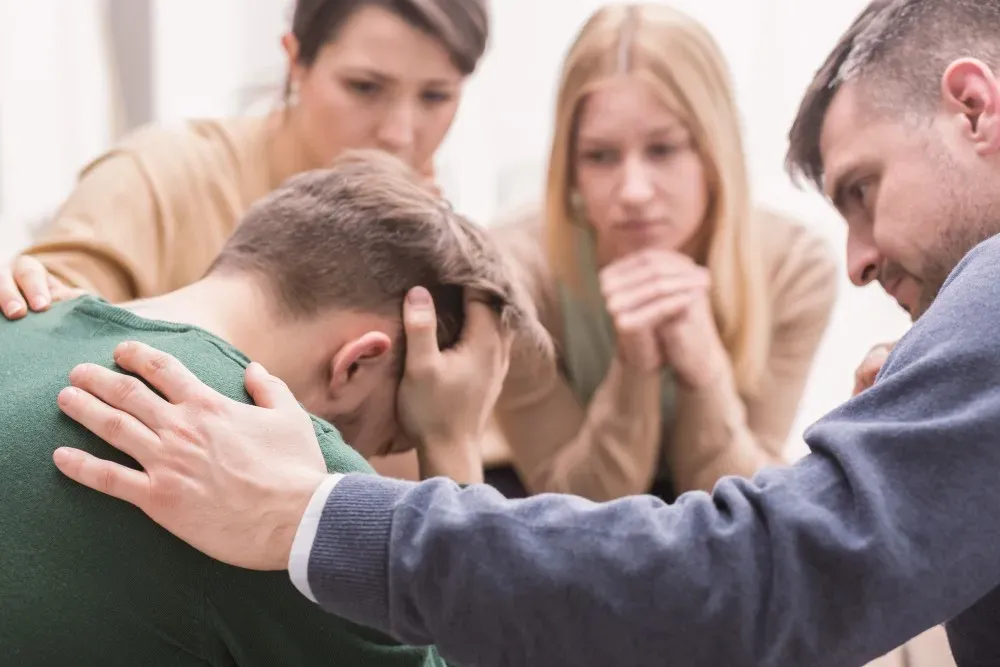When someone you love struggles with post-traumatic stress disorder (PTSD), it can feel overwhelming to know how to help effectively. PTSD doesn’t just affect the individual who experienced trauma—it creates ripple effects throughout entire family systems, transforming relationships and daily dynamics in profound ways. The invisible wounds of trauma can make your loved one seem like a stranger, leaving you searching for ways to bridge the emotional distance and provide meaningful support.
Understanding how to support someone with PTSD requires patience, education, and a multifaceted approach that balances their needs with your well-being. Face-to-face support from family and friends is considered the most important factor in PTSD recovery, making your role crucial in their healing journey. However, supporting someone with PTSD can be emotionally draining and challenging, especially when symptoms like withdrawal, irritability, and emotional numbness create barriers to connection.
The key to effective support lies in understanding that PTSD recovery is a process that takes time and often involves setbacks. Your loved one’s nervous system can become “unstuck” with the right support, but this requires consistent, informed, and compassionate assistance. This comprehensive guide will explore evidence-based strategies for supporting your loved one while maintaining your mental health, creating safe spaces for healing, and the complex dynamics that PTSD introduces to family relationships.
Understanding PTSD and Its Impact on Families

PTSD is a psychiatric disorder that occurs after experiencing or witnessing traumatic events such as combat exposure, natural disasters, sexual assault, or childhood abuse. The condition manifests through intrusive thoughts, avoidance behaviors, negative changes in mood and cognition, and alterations in arousal and reactivity. These symptoms create significant challenges not only for the individual but for their entire support network.
The disorder’s impact on family dynamics can be profound, often creating emotional distance and communication breakdowns. Children may struggle to understand why their parents have changed, potentially developing anxiety or behavioral issues themselves. Spouses frequently find themselves taking on additional responsibilities while trying to maintain family stability. Financial stress may arise if the person with PTSD cannot work or requires extensive treatment.
Creating Safe Spaces for Healing
Establishing Physical and Emotional Safety
Creating a safe environment is fundamental to supporting someone with PTSD. This involves establishing comfortable spaces in your home free from distractions where you can focus solely on your loved one. Safe spaces should include opportunities for maintaining eye contact, practicing safe touch like compassionate hugs, and maintaining physical proximity when appropriate.
The concept of co-regulation is particularly important—your calm presence can help ground someone experiencing PTSD symptoms. A safe interpersonal relationship serves as the most effective mechanism for calming the nervous system and allowing trauma integration. When you provide empathy and security during moments of terror or panic, you help create the emotional safety necessary for healing.
Reducing Triggers in the Home Environment
Work to identify and minimize potential triggers in your shared environment. This might involve establishing routines that provide stability, creating quiet retreat spaces for overwhelming moments, and being mindful of sounds, smells, or situations that might provoke traumatic memories. Structure and routine help establish safety and a sense of control, which are often compromised in PTSD.
Effective Communication Strategies

The Power of Active Listening
One of the most powerful ways to support someone with PTSD is through patient, non-judgmental listening. When your loved one shares their experiences, listen attentively without interrupting or offering unsolicited advice. This approach builds trust and helps them feel heard and validated, significantly reducing feelings of isolation and anxiety.
Avoid pressuring your loved one to talk about their traumatic experiences, as this can sometimes make them feel worse. Instead, let them know you’re willing to listen when they want to talk or simply spend time together when they don’t. Comfort comes from feeling engaged and accepted, not necessarily from discussing trauma.
Validating Emotions and Experiences
Practice validating your loved one’s feelings, even if you don’t fully understand or agree with them. Open, honest, and non-judgmental communication helps bridge the emotional gaps that PTSD often creates. Remember that their reactions and behaviors stem from genuine neurological and psychological responses to trauma, not personal choices or character flaws.
Practical Support Strategies
Encouraging Professional Treatment
Professional therapy is crucial for managing PTSD symptoms effectively. Encourage your loved one to seek help from therapists who specialize in trauma treatment. Evidence-based treatments like cognitive-behavioral therapy (CBT) and Eye Movement Desensitization and Reprocessing (EMDR) can lead to significant improvements in symptoms.
Rather than asking open-ended questions like “What can I do?” which places responsibility on the person with PTSD, offer specific, practical help. This might include researching therapists, helping with groceries, accompanying them to medical appointments, or assisting with disability applications.
Planning for Crisis Situations
Develop plans for triggering events and crises before they occur. Someone with PTSD may have difficulty thinking clearly during triggering moments, so planning is essential. Focus on strategies like moving to quiet, non-crowded areas, using distraction techniques, practicing walking meditation, or implementing other coping mechanisms you’ve identified together.
Engaging in Normal Activities
Encourage participation in “normal” activities that have nothing to do with PTSD or trauma. Plan enjoyable activities that they typically enjoyed before the traumatic event, as people with PTSD often struggle with experiencing positive emotions. Consider trauma-informed yoga, movies, weekend trips, or art classes together. Regular rhythmic exercise like walking, running, swimming, or rock climbing can be particularly beneficial.
Supporting Without Enabling

Letting Your Loved One Lead
Allow your loved one to take the lead rather than telling them what to do. Most people with PTSD instinctively know what makes them feel calm and safe. Take cues from them about how you can best provide support and companionship. This approach respects their autonomy while offering consistent availability.
Avoiding Common Pitfalls
Don’t let someone with PTSD push you away completely, as withdrawal and avoidance are common symptoms. However, balance this with respecting their boundaries and need for space. Be physically and emotionally present when they’re struggling, showing that you’re there to accept and nurture them without being overwhelming or intrusive.
Maintaining Your Well-Being
The Importance of Self-Care
Supporting someone with PTSD can be emotionally draining and may lead to caregiver burnout. You may experience feelings of fear, anger, guilt, confusion, or frustration about the situation. These mixed feelings are normal and don’t mean you don’t love your family member.
Prioritize your well-being by maintaining personal boundaries and recognizing your limits. Don’t feel guilty about taking time for yourself—this might involve pursuing hobbies, spending time with friends, or taking moments for relaxation and reflection.
Building Your Support Network
Develop your support network of people you can depend on during difficult times. This network can provide practical help with everyday tasks and emotional support, and understanding. Consider joining support groups for family members of people with PTSD, where you can share experiences and learn from others facing similar challenges.
Practice stress-reduction techniques such as mindfulness meditation, yoga, or regular exercise to manage your stress levels and maintain emotional resilience. Remember that managing your stress makes you better equipped to help your loved one—the calmer, relaxed, and focused you are, the more effective your support will be.
Seeking Professional Help for Yourself
Don’t hesitate to seek counseling or therapy for yourself. Family therapy can be particularly beneficial, as it addresses both individual symptoms and family dynamics affected by PTSD. A qualified family therapist who specializes in PTSD can help all family members understand and cope with the condition’s impact.

